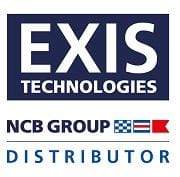How important is safe technology in the maritime industry?

Seafarers and employees at work are safer on the waterfront by having a proper knowledge of the basics of occupational safety and technology. Professionally trained crew will make less complication on board.
The Automatic Identification System (AIS) has a significant impact on the maritime industry. It is a shipboard broadcast system that acts like a transponder that is capable of handling well over 4,500 reports per minute and updates as often as every two seconds.
Messaging services through AIS have permitted port authorities to clearly communicate to vessels in range whether it be for back up, weather and navigational hazard information. Accident investigators also utilize AIS to compare or differentiate information that each vessel was receiving with other tools in order to determine the root cause of collision.
The rapid growth of emerging technological innovations is molding the future of maritime industry to its next stage of challenges and minimized crew needs. However, when crew over-rely on the available technology without being thoroughly familiar with how it operates, that’s when it leads to problems.

ECDIS and VHF
Since the adoption of Electronic Chart Display and Information System or ECDIS it has become a critical tool to mariners and navigators. It’s obvious that the pre-AIS days on the VHF are mostly gone. But why are there so many operational problems, so long after the ECDIS technology was introduced?
For starters, there is an evident lack of standardization. Mariners often complain that the ECDIS on board is not the same one they have been training for. Rather than the few dozen available on the market, it would probably work better if there were only a limited number of ECDIS types with similar user interface experience.
One of the substantial complaints is that there are too many alarms going off. It can be confusing and difficult to detect which equipment is faulting.
Another equally important factor is that many mariners do not fully understand or know the Rules of the Road (COLREGS) and interpret them based on their knowledge level. This can have a devastating impact when you combine it with distractions and indecisions.
The primary responsibility in the maritime sector is to guarantee that digital technologies on board vessels do not trade-off safety and security for the sake of convenience. Distracted driving research, whether it be on land or on water have had ever increasing numbers of accidents while operating vehicles or vessels. Technology can be more of a distraction than intended.
Awareness training campaigns should be the main goal in order to have a successful watch. Pilothouse distraction training should be added as an extra dimension to business relationship management training.
The study is still in process to determine the level of disturbance on the bridge. Feedback from the maritime industry is encouraged in order to have a better understanding of the needs and challenges of sailing mariners.








